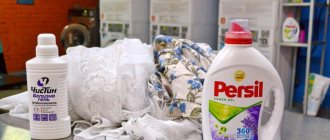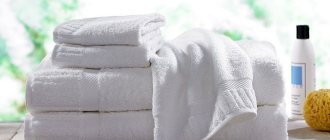Marble is considered a unique natural material that has been used by mankind for many centuries. Nowadays, more and more people are using marble to decorate the interior of their homes. Caring for marble has its own characteristics, neglect of which can lead to damage to the product.
In Europe, people pay special attention to the protection of natural stone coatings. However, in our country, people sometimes choose the most expensive types of stone, but do not care at all about protecting the natural material and do not care for it at all. But marble, like any other material, needs care. And proper care of it with the help of marble cleaning products can provide the stone with its original appearance for a long time, and will also help to avoid replacing the marble product.
Marble care
All you need to care for marble is a soft cloth, clean water and a piece of suede. Every day, wipe the marble product with a soft cloth soaked in water, and then polish it until shiny with a piece of suede. It is recommended to wash marble surfaces with warm detergent several times a year. A solution of dishwashing detergent is suitable for this. After treating the surface with detergent, wash the marble with clean water and polish with a dry towel or a piece of suede.
If you stain a marble surface with something, try to immediately remove the stain with a sponge and warm water so that the marble does not have time to absorb the dyes. If you spill red wine, immediately blot the stain with a napkin, but do not rub it, otherwise the stain will remain on the surface of the marble product. After removing the stain, wash the surface of the natural stone again with clean water and wipe with a dry cloth. Now let's try to figure out how to properly wash marble in order to remove dirt and at the same time not leave streaks on the marble.
We recommend: At whose expense do we replace the batteries in the apartment?
Daily cleaning
This is done with a dry or damp sponge or soft fiber cloth. In case of wet cleaning, do not add caustic cleaning agents to the water. Marble is a carbonate rock that is extremely sensitive to acid attack. A small amount of vinegar, lemon juice or a caustic detergent can eat away at the stone. This is especially noticeable on a polished surface.
If you need to degrease a marble surface, it is permissible to use only products with neutral PH or a solution of baby soap.
How to wash marble
Washing marble consists of two stages. This is cleaning the surface from contamination and protecting the stone.
First, you need to dry clean and remove solid particles of dirt, dust and small debris from the marble surface using a soft brush. Next, the marble product must be treated with a special daily care product (for example, LEM-3 or Bellinzoni). If the marble is too heavily soiled, then concentrated cleaning solutions are used to remove stubborn stains (for example, Ultra Stripper). After wet cleaning, you need to leave the marble surface alone for a while and let it dry naturally. Next, you can begin treating the surface with protective agents. Today, marble surfaces can be protected in 3 main ways:
- surface treatment with wax, which creates a protective film on the surface of the stone and gives the product a pristine shine;
- impregnation of the surface with dirt-repellent agents. In this case, the impregnation penetrates deep into the stone and creates a film that prevents the penetration of dirt, various liquids and oils. Moreover, some dirt-repellent agents have a toning effect. By applying this product to marble, you can give it the effect of wet stone;
- a mixed method, which includes treating marble with stain-repellent impregnation and wax. Mixed-type drugs such as Idea HP and Bellinzoni have proven themselves well.
There are also combined detergents for marble, which contain synthetic or natural wax. These cleaning products are great for everyday marble maintenance.
Sometimes after washing the marble surface it is necessary to apply polish. For example, marble floors are best treated with a polish with an anti-slip effect (polish AS-11).
How not to clean marble
Do not clean marble with Coca-Cola, vinegar, orange juice, as well as sand, chalk chips and other abrasives. In addition, it is not recommended to remove dirt from the marble surface with products containing aggressive acids and preparations intended for cleaning ceramic tiles. Please note that even weak acids can destroy the structure of the stone, and any abrasive agents leave scratches on the surface of the marble.
Removing rust from marble
The noble surface of marble is often contaminated by metal, steel, copper, bronze or simply iron elements of room decor. In places where marble comes into contact with metal furniture, nails and fasteners, floor lamps, bed legs and other furniture, rusty brown stains may appear. To get rid of them, use a special cleaner for natural stone. When using the cleaner, carefully read the instructions for use and do not leave the product on the marble surface for too long. Otherwise, industrial chemicals can damage and even destroy marble.
Removing stains on marble
The most important thing in removing stains on marble is to find the cause of the stains. First, make a cleaning paste out of some white material, such as a paper napkin or paper towel. Soak a napkin or towel in the cleaning solution and spread it over the entire surface of the stain. Leave it on for 2-24 hours, depending on the cleaning product and the degree of soiling. Cover the “paste” with a damp cloth and plastic wrap to prevent the mixture from drying out. After a few hours, remove any remaining tissue and cleaning product with a damp cloth. Repeat the procedure if necessary.
We recommend: How to get money back for major repairs
Polishes and waxes
Over time, the polished surface loses its original shine, but it can be restored even at home - of course, if we are not talking about a completely worn out top layer. Polishes and waxes are used for this.
Treatment of stone with wax was used in ancient Rome.
Most modern polishes are based on paraffin or silicone. The polishing paste fills the micropores of the stone - and the surface gives the impression of being polished. Over time, detergents wash the substance out of the pores, and the procedure has to be done again.
The following compositions can be found on the market:
- liquid;
- and thick.
For vertical surfaces, naturally, the second option is preferable.
After application and polymerization of the product, the surface is polished with a soft, lint-free cloth, dry and clean, of course.
Removing tea, coffee and tobacco stains
Such stains leave pinkish marks on the marble. If the marble product is located on the street, then they can pass on their own, becoming lighter due to the sun's rays and being washed out by rain. But indoors, it is better to remove this type of pollution using special cleaning products. For this, a mixture prepared from a few drops of ammonia and a 20% solution of hydrogen peroxide is suitable. Soak a napkin in stain remover and leave it for a day. After this, rinse the marble with warm water, then wipe with impregnation and polish until shiny.
How to clean a stone sink
As already mentioned, marble is afraid of acidic environments, so avoid products containing citric, acetic and other acids. Do not use popular household pastes and powders with abrasive substances, which are popular when cleaning earthenware, ceramic and metal products. They clean really well, but are contraindicated for marble because they scratch the polished surface.
What you can use to clean your sink:
- A weak solution of ammonia in water. Pharmacies sell a 10% solution known as ammonia. A mixture of hydrogen peroxide and ammonia works well to remove yellow stains.
- Special preparations. For example, KREISEL MARMOR-REINIGER marble cleaner. The solution is already ready for use; just apply it to a regular kitchen sponge.
- Products for daily care of natural stone. For example, LEM-3 from the Italian manufacturer Bellinzoni. This is a concentrate, it needs to be diluted in a proportion of 2-3 tablespoons per bucket of water.
If suitable cleaning products are not available, a regular soda solution will do. It is abrasive, so be careful. Three tablespoons of soda per liter of water is enough.
Removing oil stains from lotions, oils, grease, cosmetics
Grease stains can leave dark marks on the surface of marble. If you notice such a stain, apply any absorbent powder, such as starch, to it as soon as possible. After some time, remove the powder and apply a new one. Do this several times. Leave the last portion of starch for 24 hours, and then remove it using any detergent for marble surfaces (alternatively, you can use an aqueous solution of ammonia). Wipe the marble dry, treat with impregnation and polish.
We recommend: Regional supplements for pensioners
If the stain is not removed, use a solvent. Soak a napkin (several napkins) in acetone, open the windows and leave them on the stain. Do not keep the mixture for too long to avoid poisoning, as acetone vapors are poisonous, and do not use acetone near heating appliances and gas stoves.
Removing plant stains from pools, fountains and showers
Not even stains, but just mold, moss, algae, lichen or fungi often appear where it is damp and humid. Accordingly, their formation can easily be assumed in fountains, pools and showers made of marble. All these formations can be easily removed from the marble surface with simple hydrogen peroxide or ammonia.
ATTENTION! Never allow hydrogen peroxide and ammonia to be mixed - their combination creates a chemical reaction, the result of which is a poisonous, deadly gas!
Life time
Marble products are very durable. But their service life depends on the deposit and type of stone. But in any case, the first signs of aging in white marble may appear only after a hundred years, and in colored marble - after 150.
Using marble for monumental sculptures, tombstones, and as a facing building material is a win-win option, since they will last for centuries.
Artificial stone is also durable, easy to use, does not weather or crumble. It not only decorates the walls, but also additionally protects them.
Comparative table of various contaminants and their effects on marble
| Types of pollution | Cast marble | Natural marble |
| Lipstick | no noticeable effect | Faint Spot |
| Red wine | no noticeable effect | Faint Spot |
| Ketchup | no noticeable effect | Etching |
| Vinegar | no noticeable effect | Excessive etching |
| Tea | no noticeable effect | Faint Spot |
| Lemon juice | Very faint spot | Excessive etching |
| Milk | no noticeable effect | no noticeable effect |
| Food colorings | Very faint spot | Gets dirty |
| Liquid shoe polish | no noticeable effect | Very faint spot |
| Beet juice | no noticeable effect | Very faint spot |
| Liquid deodorant | White ring | Etching |
| Coffee | no noticeable effect | no noticeable effect |
| Chrome mercury | Very faint spot | Gets dirty |
| Phosphate trisode | no noticeable effect | no noticeable effect |
| Ethyl alcohol 95% | no noticeable effect | no noticeable effect |
| Ink | no noticeable effect | no noticeable effect |
| Chlorine bleach | no noticeable effect | no noticeable effect |
| Blue | no noticeable effect | no noticeable effect |
| Wax colored chalk | no noticeable effect | no noticeable effect |
| Oil | no noticeable effect | no noticeable effect |
What should not be used to clean marble surfaces.
- ordinary household cleaning products (all kinds of detergents, cleaning and washing powders such as “Domestos”, “Fairy” and others), because the most non-aggressive acids can destroy the natural stone structure, and powders will certainly leave scratches on the surface. You should also not use a ceramic tile cleaner.
- acidic substances (for example, juice or vinegar), as they can damage the polishing coating of the stone.
Therefore, before contacting a cleaning company, be sure to find out what means and methods they use to clean marble surfaces in order to avoid the negative consequences of cleaning.
Technical side of comparison
The marble contains carbonate conglomerates and breccias, and dolomites of high density. It also contains organic matter in its structure.
Technical properties of natural marble:
- Density - 2600-2900 kg/m3
- Water absorption – 0.15 – 0.5%
- Compression resistance – 500-2500 kgf/cm2
- Porosity - 0.6-3.5%
- Abrasion – from 0.40 to 3.20 g/sq.cm
The following indicators are typical for cast marble:
- Density is 18000-2200 kg/m3
- Water absorption – 0.15 – 0.7%
- Abrasion – 0.45
Choosing a granite cleaner
The most difficult to remove stains are easier to clean with a powder composition that is slightly abrasive. It will not scratch the surface, but will have a more active effect on the same rust or limescale. If you don’t have a ready-made mixture on hand, use regular soda.
Among the “improvised” remedies against stubborn stains, a simple mixture of ground chalk and hydrogen peroxide is also recommended:
- Mix the ingredients to form a “thick sour cream” and use this paste to remove stains.
- Apply an even layer of about one centimeter and cover with film on top to prevent rapid drying.
- When you notice that the chalk has become a dry crust, remove it and wipe the surface. Usually this is enough, but if the contamination remains, the procedure is repeated.
Those who don’t want to waste time waiting will like ready-made products for cleaning granite:
- Wall Clean Bellinzoni cleaner (price from RUB 1,600 per 750 ml jar). The cleaner copes with old grease, dirt, paint, oil and soot from firewood.
- Acid-based cleaner FILA DETERDEK (from 1100 rubles per 1 liter). Cleaning granite will be gentle and safe, but remember to take precautions when working with an acidic solution.
- FILA SR 95 liquid stain remover (price approximately 1300 rubles). A spray of this brand for removing stains would also be good.
- Faber - problem stains can be easily removed with COLOURED STAIN REMOVER, which carefully cares for the surface of the stone and costs only 700 rubles.
- COLORED STAIN REMOVER - an excellent choice would be the CLEANER AND DEGREASER cleaner costing from 750 rubles. Removes grease, soot, oil stains, and removes stubborn wax coatings on any base.
In fact, there are a lot of preparations; when choosing a granite cleaning product in the store, ask what its composition is. Acid mixtures for cleaning granite are very effective, but are not recommended for constant use: they are used in doses and only in difficult cases.
How to properly clean marble floors at home
Wet cleaning of marble floors is recommended 1-2 times a week. If contaminated with any substance, you should immediately blot the stain with a paper towel, napkin, or even a soft cloth. Just don’t leave it for too long so that it doesn’t get absorbed into the stone, and don’t rub it. Clean the floor in two stages - cleaning and protection:
- First, remove debris, dirt, and dust using a dry soft brush.
- Then they carry out wet cleaning during and after drying, and treat them with a special protective composition.
Concentrated products are designed to remove strong, stubborn dirt. There is no need to use circular movements; rub the floor along the marble fibers. You need distilled water and a microfiber mop. Highly hard and hot water negatively affects the shine of the floor.
See also
How to remove paint from linoleum, how to quickly wash off dirt
Environmental friendliness
Since natural marble is created by nature itself, it is very environmentally friendly, and artificial stone is not inferior to it in terms of environmental friendliness, since it is made from materials of natural origin. porosity
This natural material has high porosity, it literally breathes. Therefore, rooms decorated with it always have a favorable microclimate. Due to its plasticity and viscosity, marble does not immediately crack upon impact, so various products can be carved from it.
Unlike ordinary stone, artificial stone has no porosity at all.
Difference between marble and granite, which is better?
Marble is often compared to granite. The strength of marble is slightly lower than that of granite, which is why its service life is not 600 years, but only 200.
But compared to granite, marble wins in some respects. It is softer, so it is easier to handle. But it is very resistant to impacts and is not subject to splitting or cracking. Marble feels very warm and pleasant to the touch.
Marble is a very beautiful material, so most people believe that marble is beyond competition and its aristocratic translucency cannot be replaced by any artificial material, even the most high-tech.
Difference in colors
The color depends on the impurities it contains. Most of the stones are variegated. Due to its high cost, artificial stone is gradually beginning to replace natural marble. It is highly decorative and has a huge variety of appearance.
Including:
Structure
There are several varieties of marble. Fine-grained marble, due to its fine-crystalline structure with toothed grain adhesion, has excellent polishing properties. There is coarse-grained marble, in which the cleavage of the grains is clearly visible.
Artificial marble has a homogeneous composition, it is thinner, more durable, and easy to process.
Texture
Marble is the only natural stone that has a huge variety of colors and subtle shades. Its texture is unique and often differs even within the same slab. It can be layered and massive. On polished sections of marble you can see a unique pattern with various combinations of colors. Its color depends on the admixture of metals present in the sedimentary rock.
Conventionally, marble is divided into two groups:
- white;
- color.
Colored marble has many veins.
Artificial marble is similar in texture to natural marble.
Photo of natural stone - red marble











